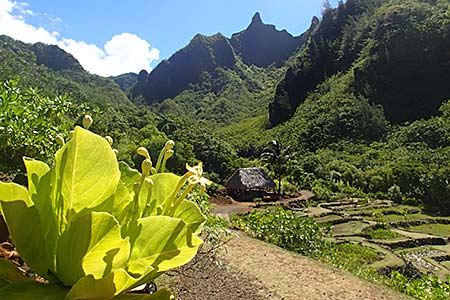
The maintenance of biodiversity is an important objective of many conservation plans. We are working with a number of institutions to assess the levels of genetic diversity that currently exist in a number of rare species, both in situ and ex situ. This includes working with numerous partners on the vulnerable Cirsium hillii and the federally listed, Cirsium pitcheri. We are also working on several threatened oak (Quercus) and Magnolia species; a number of Hawaiian and Caribbean taxa, including palms, cycads, Hibiscus, and Brighamia insignis; a rare evening primrose from New Mexico (Oenothera organensis); and the charismatic corpse flower (Amorphophallus titanum). These types of studies allow us to assess populations of critical concern and assist with management and conservation collection decisions.
It is also important to understand the genetic diversity held by ex situ collections and develop tools and techniques to slow the loss of this diversity wherever possible. This is important because ex situ collections that are not genetically diverse are of limited value to the long-term conservation of the species. Several of the taxa above are part of a project to adapt zoo population management approaches to plants held in botanic gardens. For the majority of plants, seed banking is the most common method of long-term plant conservation. However, for “exceptional species,” the roughly 20 percent of seed plants not suited to seed banking, a living plant collection is often used for conservation. The viability and value of living collections can be limited without tracking individuals and their genetic lineages. The zoo community has established processes to do this for captive animal populations. We are testing this coordinated approach to support conservation of plant species at multiple botanic gardens around the world. (Fant, Havens, Kramer)

